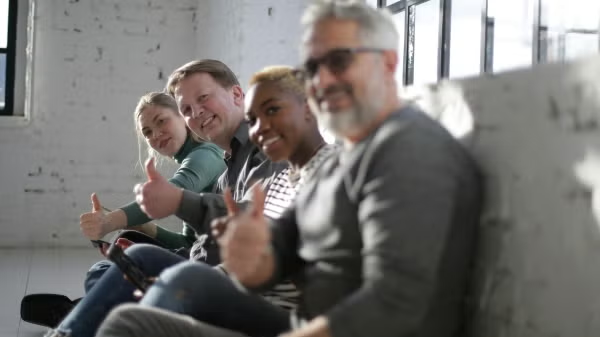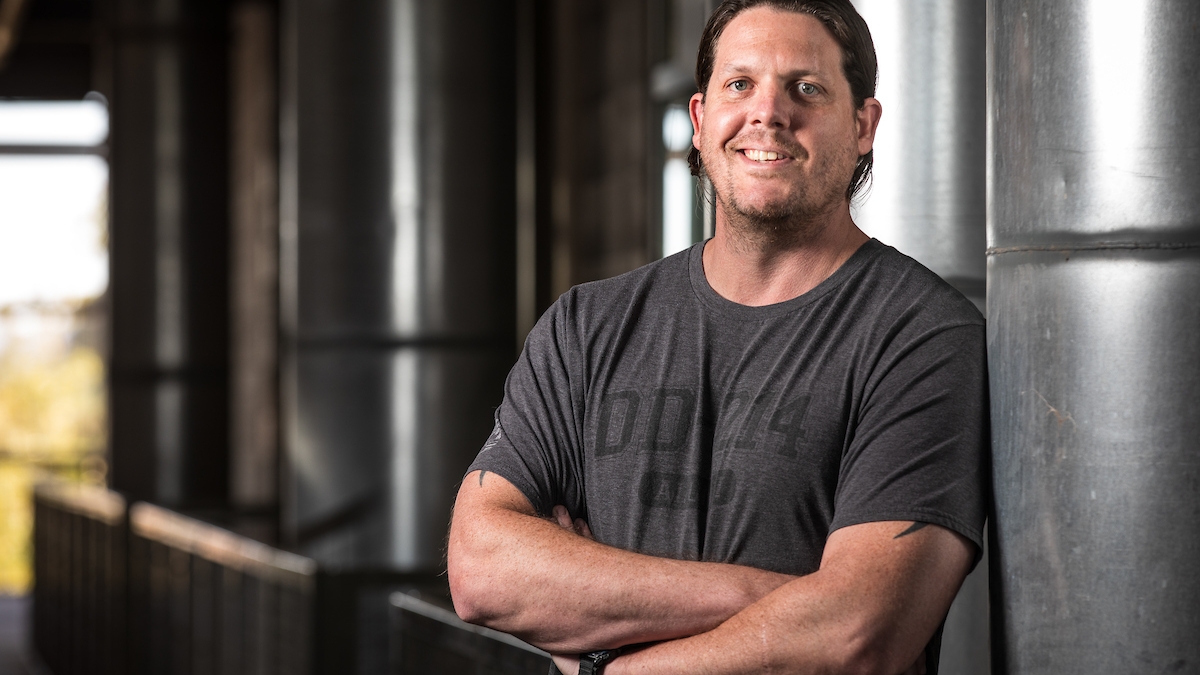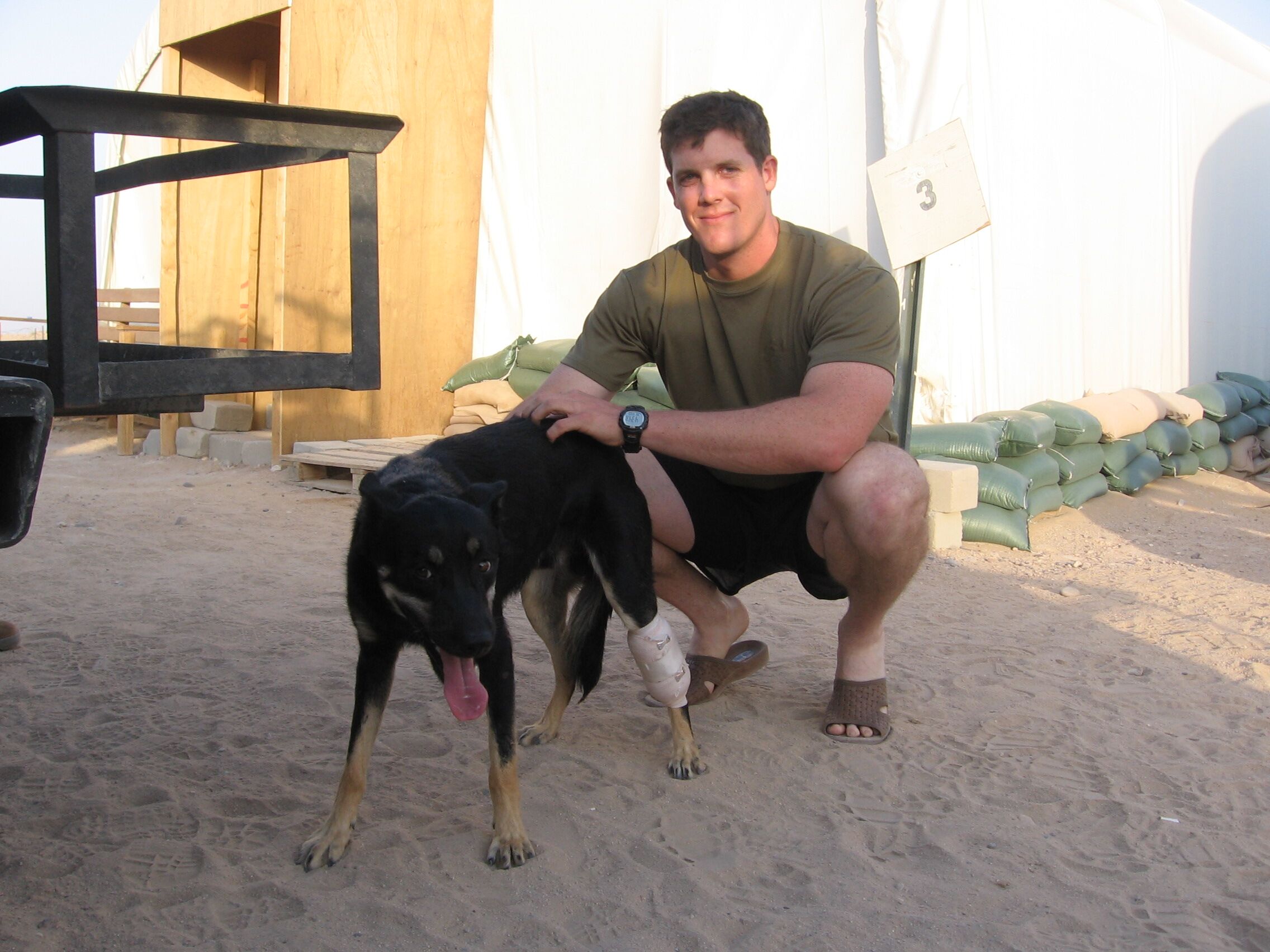Michael Sheppard is a former Navy special operations combat medic and current PhD student in engineering education systems and design in the Ira A. Fulton Schools of Engineering.
At 6 feet, 3 inches and a muscular 230 pounds, the Arizona State University student veteran is the picture of health. However, you might never know that Sheppard has a service-connected disability.
And such is the case with many other veterans coming home from deployments who survive through “invisible disabilities” — hidden ailments or impairments not detectable at face value.
“They are psychological, emotional and traumatic disabilities that veterans may carry with them that are not recognizable to mere observation and tend to be unseen,” Sheppard said.
Sheppard’s research backs him.
His study, “Exploring the Unique Skills and Challenges Veterans with Disabilities Bring to College: A Qualitative Study in Engineering,” was published by the American Society for Engineering Education and co-authored with Associate Professor Nadia Kellam and Assistant Professor Samantha Brunhaver, both faculty within the Polytechnic School engineering program at ASU.
Sheppard’s study focused exclusively on undergraduate student veterans currently enrolled in the Fulton Schools and pursuing engineering degrees. His goal is to help student veterans better understand the strengths, skills and strategies they learned in the military and continue to use them. Sheppard believes that a focus on those positive attributes is far more valuable to the students and academic community than the exploitation of sensational challenges that may be unique to student veterans.
“Most work surrounding transitions, veterans and survivors of traumatic situations is deficit-based, which focuses on their problems,” said Sheppard, who served in the military from 2003 to 2009. “My work aims to connect with other student veterans and identify their strengths and assets that were gained through their time in the service.”
Among the findings, student veterans with service-connected disabilities:
- Initially face challenges both inside and outside the classroom due to dramatic changes in their social support systems and structural guidelines offered by the military.
- Have an elevated work ethic.
- Employ a heightened level of leadership, teaming and communication.
- Acquired experiential learning skills from their military service.
- Bring valuable skill sets, thought processes and problem-solving techniques to the engineering community.
In April, Sheppard presented these findings at the Collaborative Network for Engineering and Computing Diversity Conference in Crystal City, Virginia, in front of an appreciative audience of researchers, academic practitioners and veterans.
Michael Sheppard on deployment in Kuwait in 2006. Sheppard said the dog limped into the camp with a severe leg wound and he treated him. "He decided to stay with us a few days," said the former Navy medic. "Eventually someone in the platoon decided to name him Slick. He made a full recovery."
Sheppard's study will be helpful in the quest to aid student veterans' transitions to academia, said retired Navy Capt. Steven Borden, director of the Pat Tillman Veterans Center.
“There is a huge cultural transition for anyone leaving the military and it affects finding your new goals, developing a sense of belonging and understanding how things work in general," Borden said. "When you compound this transition with a disability, it becomes even more daunting. Nevertheless, when we connect with a student veteran and help them figure this transition out, they consistently perform amazing things. They are a valued part of our university community and should be in every institution.”
Sheppard said he wants to develop a deeper understanding of the experiences of these student veterans as they transition into higher education. ASU’s status as a Victory Media Military Friendly School made it an ideal location to conduct research, said Sheppard.
“At ASU we have many opportunities and avenues of support, but some veterans may still miss the support structures that they utilized during their military service,” he said. “It’s important to support our military veterans and recognize they may face unique challenges. However, more importantly, there needs to be a conversation about the unique skills that veterans bring to their institutions and places of work.”
Currently, an estimated 800,000 student veterans attend institutions of higher education in the United States, according to the Journal of Veterans Studies. More than 9,000 military-affiliated students are currently enrolled online and on campus at ASU, including 1,800 veterans in undergraduate engineering programs.
Moving from military to college can be tough for veterans, Sheppard said, especially when dealing with service-connected disabilities like traumatic brain injury, post-traumatic stress disorder, debilitating pain or vision or hearing loss.
Beyond dealing with invisible disabilities, Sheppard said other factors come into play. He said the military is full of structure, while the college lifestyle is full of choices and freedom that student veterans may not be accustomed to. In this new setting, student veterans create new routines as they reintegrate into a civilian lifestyle and the university setting. Age, status, family obligations, loss of camaraderie, a sense of social disconnection and discomfort in large crowds may further impose additional challenges on some veterans as they enter college.
Sheppard said even though the transition to school life can be fraught with challenges, student veterans bring valuable life experiences to the table.
“People in the military have experiences that only 1% of the population in the United States are exposed to,” said Sheppard, who was deployed to the Middle East. “Some of them are negative, some of them are positive, but all of those experiences and perspectives can be used as strategies, assets and strengths as they move forward in their lives.”
For some, moving forward meant sitting down and talking candidly to Sheppard for his study. Each selected participant had levels of service-connected disabilities exceeding 30% and openly discussed their transitions from active duty to civilian life. They also reviewed their experiential knowledge gained from training and military service, and talked about how they could use those skills in the classroom and their day-to-day lives.
Sheppard’s past military service helped the subjects open up about their lives, said Brunhaver.
“His background has given him firsthand understanding and an ability to uniquely empathize with the kinds of issues that his participants are experiencing as they navigate their engineering programs,” Brunhaver said. “The rapport he was able to build through shared and similar experiences has helped these relationships to flourish outside the research as well, into something that seems to have become mutually beneficial for both Michael and the participants.”
Sheppard said that through the study, some student veterans discovered strengths and strategies they did not previously recognize. There were also important moments when participants shared that they have the capacity to bring new skill sets, thought processes and problem-solving techniques to the engineering community.
“We are taught many skills in the military, but at the heart of it is problem-solving. That aligns very well with the engineering problem-solving method,” Sheppard said. “Problem-solving is a large part of military service. They have already completed similar tasks. Now they just have to identify the new language and verbiage as it relates to solving engineering problems versus how they did it before … the tools and assets they used in the past can still help them as they move forward.”
Brunhaver said the study was a good reminder that while ASU does a solid job supporting student veterans when they arrive, she’d like to see more programming for veterans in the middle to later stages of their degree programs, particularly as they think about their long-term goals and plans.
“We should be thinking how to develop not just one or two resources, but a plethora of resources so that student veterans feel supported in their education across all four campuses and throughout their academic careers,” Brunhaver said.
To that end, Sheppard has vowed to do the same.
“Student veterans have a lot to offer in their postmilitary lives,” Sheppard said. “Helping them transition back into the civilian world is the focus of my current work.”
Top photo: Engineering doctoral student Michael Sheppard helps student veterans get comfortable in an academic setting by utilizing assets they've used in past military service. After serving six years in the Navy, he focused his education on engineering and is now researching the psychological, emotional and traumatic disabilities that veterans carry and how to turn those disabilities into assets. Photo by Charlie Leight/ASU Now
More Science and technology

Astronomers observe ultra-hot nova with unexpected chemistry
A team of astronomers, including Arizona State University Regents Professor Sumner Starrfield, has uncovered an exceptionally hot and violent eruption through the first-ever near-infrared analysis of…
Statewide initiative to speed transfer of ASU lab research to marketplace
A new initiative will help speed the time it takes for groundbreaking biomedical research at Arizona’s three public universities to be transformed into devices, drugs and therapies that help people.…

ASU research seeks solutions to challenges faced by middle-aged adults
Adults in midlife comprise a large percentage of the country’s population — 24 percent of Arizonans are between 45 and 65 years old — and they also make up the majority of the American workforce…

